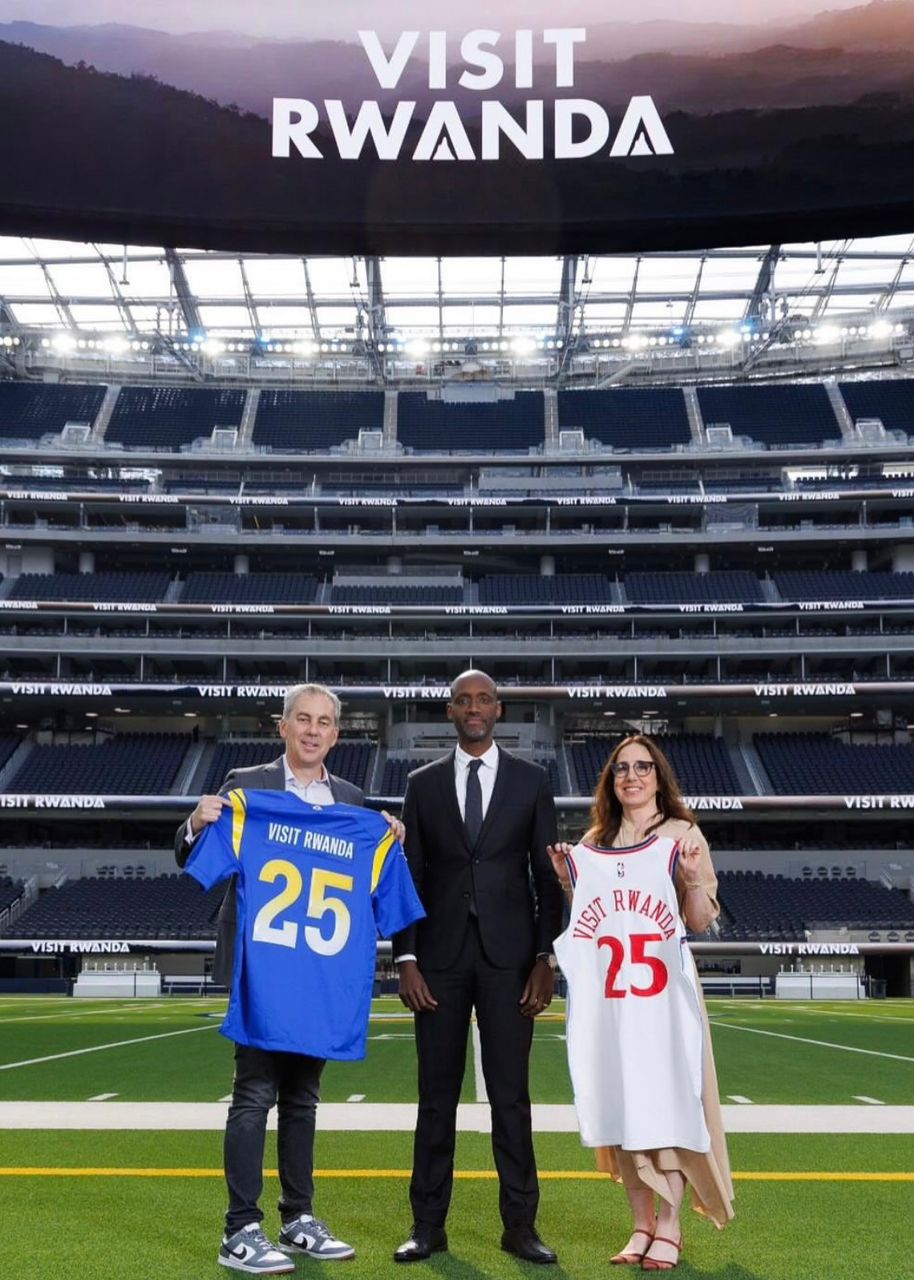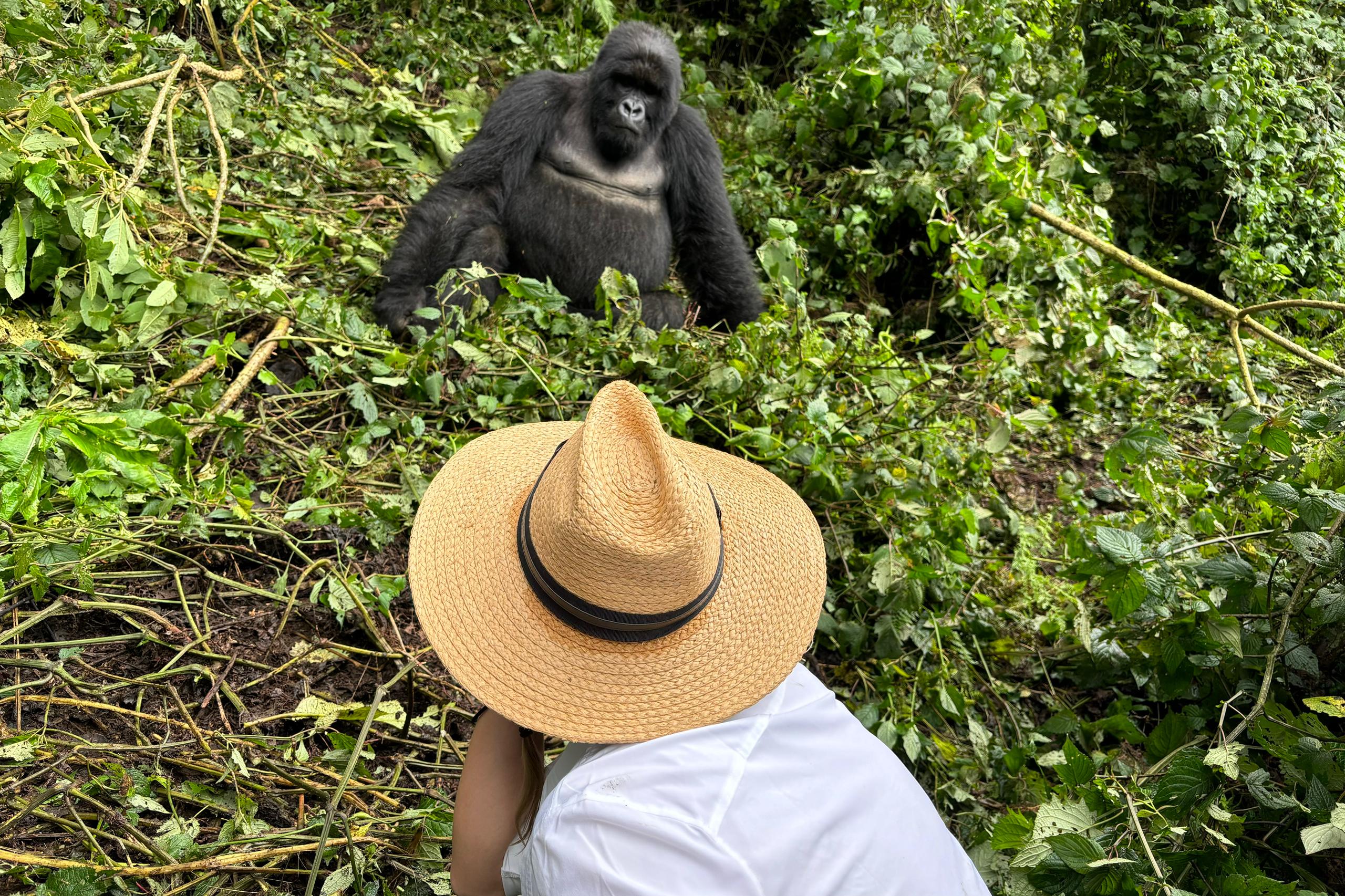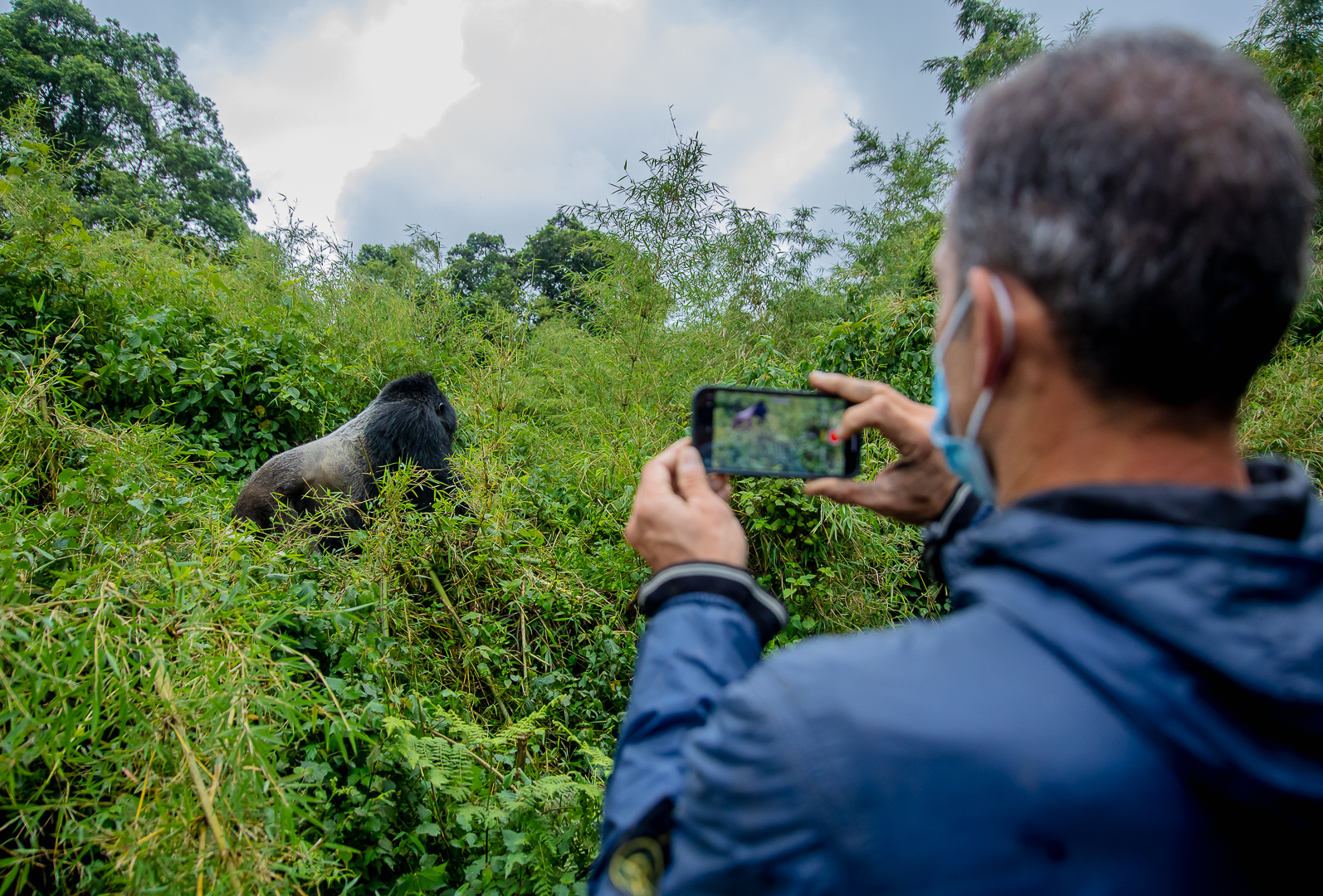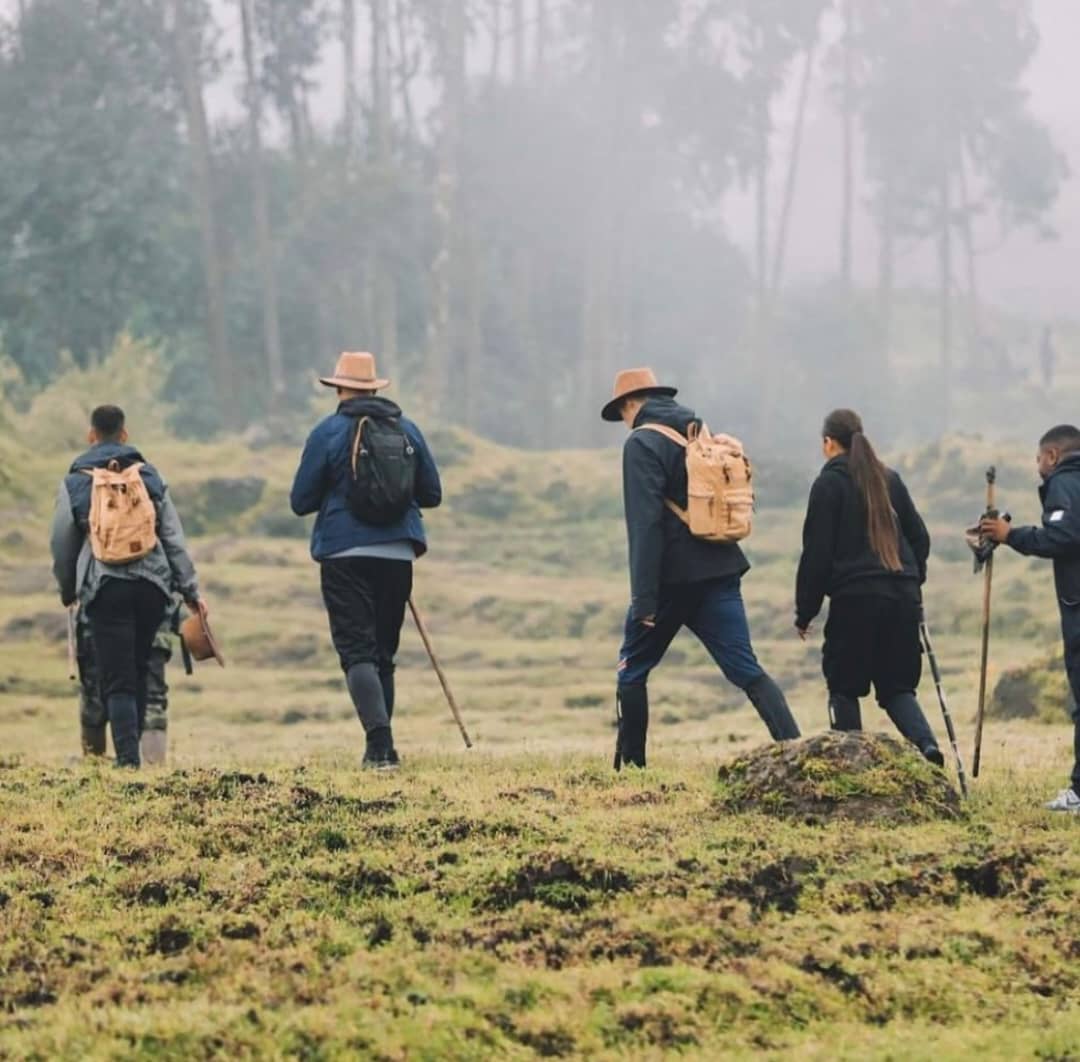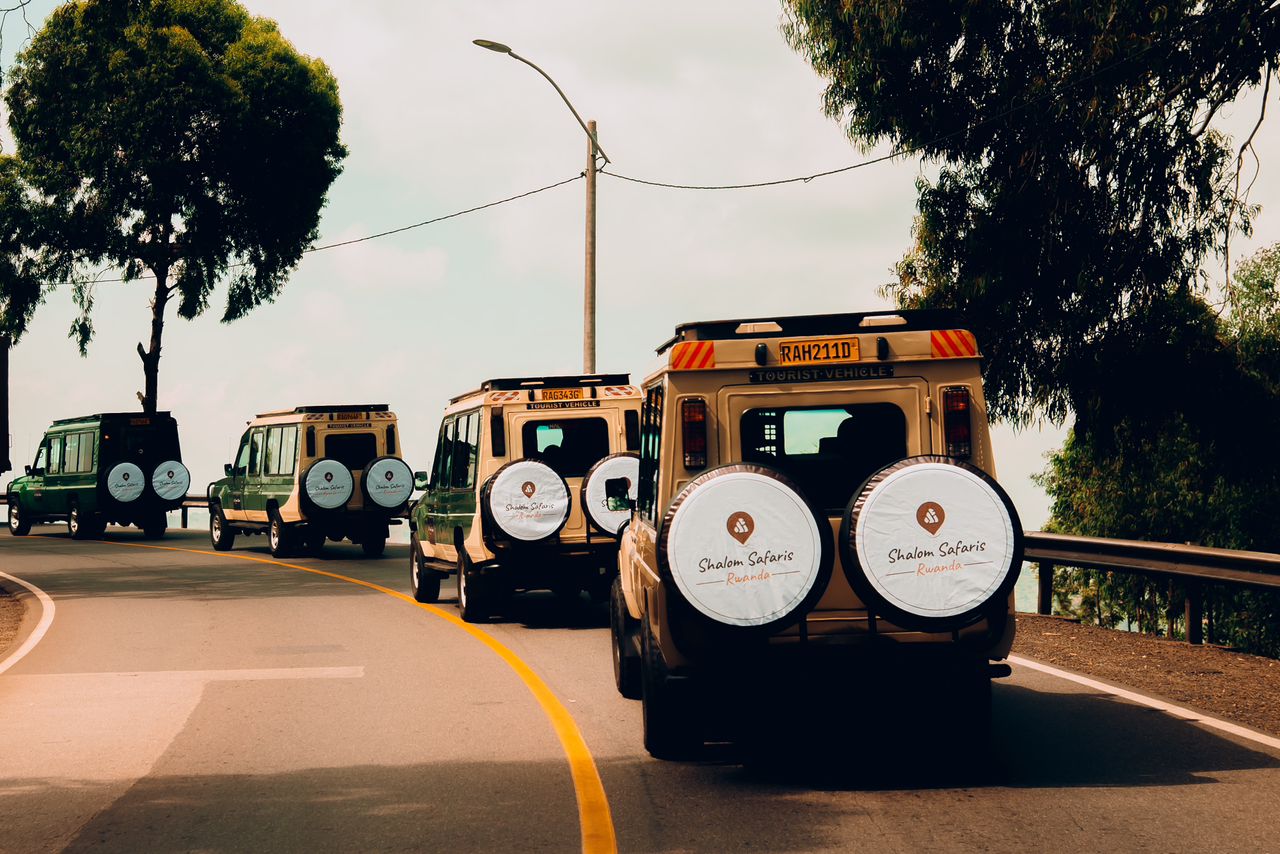Gorilla Trekking in the Volcanoes National Park is popular because Rwanda is considered by some to be the best place to see gorillas in Africa. The park is home to the intriguing but endangered mountain gorillas. Mountain gorillas are found in only 3 countries – Rwanda, Uganda and the Democratic Republic of Congo.

The Volcanoes National Park covers an area of about 16,000 hectares and is found in the northwestern part of Rwanda. It consists of afro-montane forests, bamboo forests, savanna grassland, vast swamps and 5 volcanoes (Bisoke, Gahinga, Muhabura, Sabyinyo and Karisimbi). Mount Karisimbi is one of the four tallest mountains in Africa. The Volcanoes national park is home to the spotted hyena, buffaloes, elephants, bush bucks, duikers and golden monkeys among many other mammals.
Gorilla tourism in Rwanda attracts many Travelers to the Volcanoes National Park and the chances of seeing mountain gorillas is very high. Gorilla trekking at the Volcanoes National Park involves hiking through dense bamboo forests and steep mountain slopes in search of one of the gorilla families in Rwanda. The final encounter with the primates is considered to be one of the most exciting and memorable Wildlife encounters in Africa. To have the best of both worlds, visitors can also cross the border to see the gorillas in Uganda in what is a known as double gorilla trekking. Some tourists even opt for triple gorilla trekking where they also visit the gorillas in Virunga National Park of Congo. An even more exciting experience is seeing mountain gorillas and Eastern Lowland Gorillas in Kahuzi Biega National Park of Congo. Tracking gorillas in the Volcanoes National Park can be challenging but the final meeting with the gorillas is considered by many to be the ultimate wildlife experience.
Cost of gorilla trekking in the Volcanoes National Park
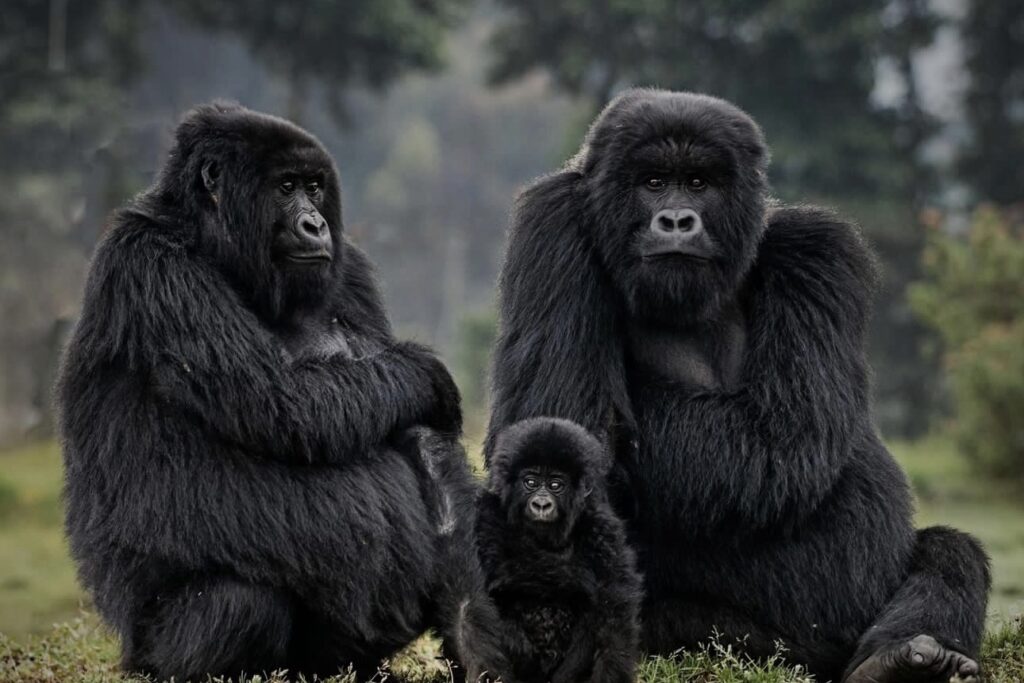
One must book a Rwanda gorilla permit in advance so as to be sure of getting a spot for gorilla trekking on a given date. Gorilla permits can be very difficult to secure during peak seasons like June to September and December to March. Gorilla permits in Rwanda currently go for $1500 for international traveler,$500 for african citizens,$200 for Rwandan and east african citizens. That is only a fraction of the overall price of gorilla trekking. It is important to note that part of the money collected from gorilla permits go to support gorilla conservation efforts and community programs. Booking permits can be done through your tour operator or directly through the Rwanda Development Board. In order to book the permit, passport details must be presented to the Rwanda Development Board. There are 10 gorilla families available for trekking and only 8 people can visit a particular group in a day. This implies that there are only 80 gorilla permits available per day for the various habituated gorilla groups.
How is gorilla trekking in the Volcanoes National Park like?
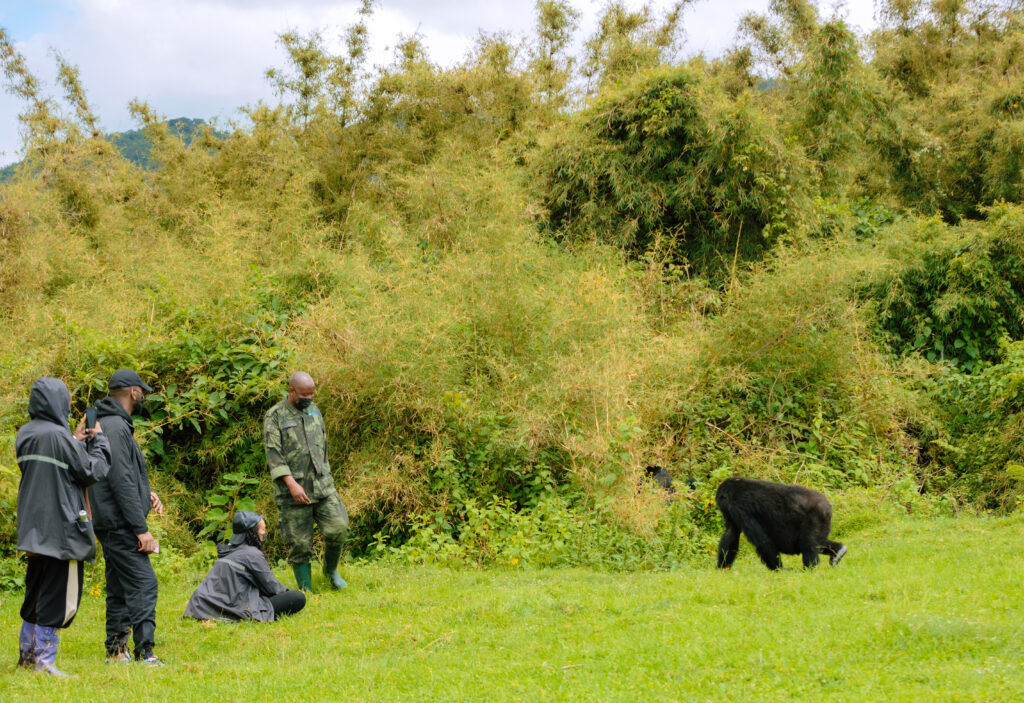
Gorilla trekking in Rwanda starts with a briefing from the park authorities and Rangers at around 7:30am. During the briefing, participants are divided into groups and assigned to a particular gorilla family. The less fit hikers are assigned groups which are closer to the park offices. At 8:00am, the park Rangers lead the group to search for the gorillas. As already noted earlier, gorilla trekking in Rwanda offers you 10 habituated groups/families to choose from. Regardless of which group you eventually get, you will find the experience amazing. You could spend hours just watching the little ones roll around and play. Mountain gorillas are always playful and quite curious. Some may walk right up to you but with no harm intended. While with the gorillas, it’s important to listen to instructions from your Guides and to always stay calm. Never make sudden movements. Gorilla tracking in Rwanda can take between one to six hours depending on the gorilla group you are assigned and their specific location on the day of the trek.
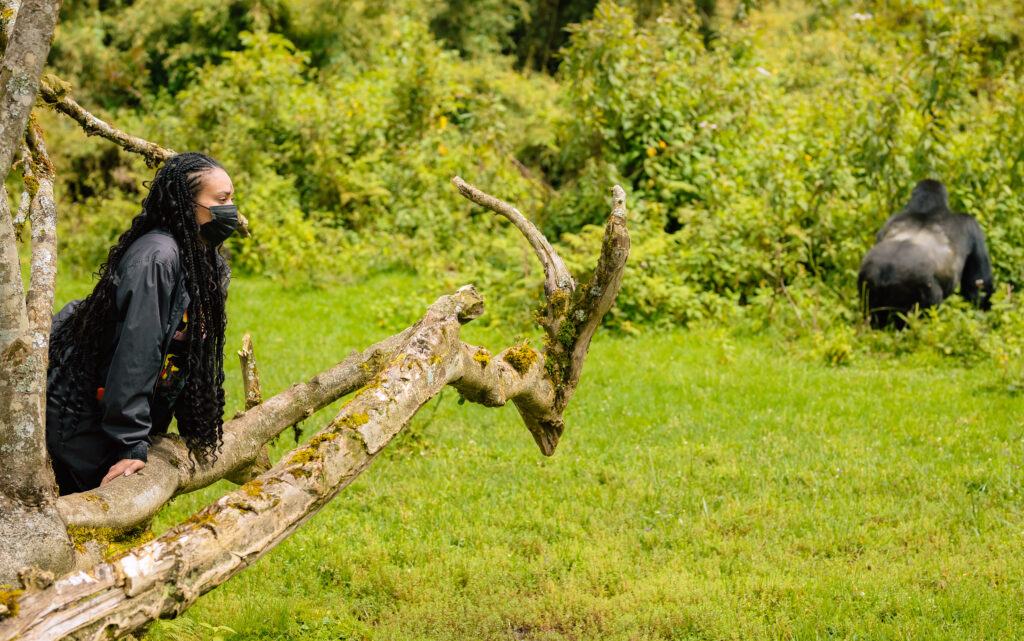
Note: Hire a porter or two if you have extra heavy luggage or equipment. Porters are available at the starting point. Many of these porters were once poachers but have now embraced gorilla conservation programs. The income earned from offering their services keeps them from going back to their former vice. If you are planning to travel with your parents, you might want to read about gorilla tracking for older people. The services of porters costs between $10 and $15. You will need suitable hiking boots, thick cotton gloves and a raincoat. Your Tour Company should be able to send you a comprehensive packing list and rules for gorilla trekking.
How to prepare for Gorilla Trekking in Volcanoes National Park Rwanda
- Prepare in advance physically and mentally by taking long walks in nearby forests.
- Acquire suitable footwear to navigate through the sometimes challenging terrain.
- Come knowing it may rain heavily.
- Pack enough drinking water and light snack.
- Give tip to the park Rangers and guides whenever you can – They do a lot to make your gorilla tracking adventure worthwhile. The recommended tipping rate is between $10 and $15 or its equivalent in the local currency.

Like all activities, gorilla trekking in Rwanda has rules and regulations. You must be 15 years and above to go near the primates. The reason why children aren’t allowed near the gorillas is because they tend to carry transmittable diseases like flue and cough which can be transmitted to the primates. It is one of the reasons why tourists are required to share their passport details before booking a trip. Mountain gorillas are endangered and only 1,000 remain in the wild. All steps are taken to protect them from diseases. Anyone with a communicable disease cannot be allowed near the primates. Mountain gorillas are not immune to some of the infections we carry as humans. There are other rules and regulations for gorilla trekking but they can be found in another article.
Note: There are other interesting activities in the Volcanoes National Park like: Golden monkey trekk ,Bisoke Hiking and other volcanoes,visit the grave of Dian Fossey,Musanze Caves,birding and visit the Iby’iwacu cultural village.

